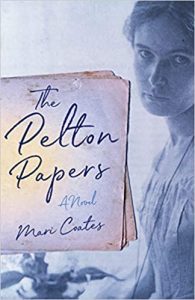Practicing Inspiration
 Can you really practice inspiration? We writers all want it, we all seek it, but mostly it seems to arrive on its own schedule, out of nowhere—a tiny light in the distance, or a sudden burst of joy, the sigh of relief and ahh, now I see! Here’s the right word, the missing image, the forward path.
Can you really practice inspiration? We writers all want it, we all seek it, but mostly it seems to arrive on its own schedule, out of nowhere—a tiny light in the distance, or a sudden burst of joy, the sigh of relief and ahh, now I see! Here’s the right word, the missing image, the forward path.
The word inspiration comes from the Latin inspirare, which means to breathe in. To inhale. And, according to my handy Merriam Webster dictionary, “[It] was originally used of a divine or supernatural being, in the sense of ‘impart[ing] a truth or idea to someone.’” And isn’t that exactly what inspiration feels like? A gift coming from outside one’s self, which is also very much of one’s self and which conveys a truth. We know it’s a truth because we recognize it. And in that instant, we also realize that inspiration is a gift, unearned, like grace. And so, with gratitude and a sense of humility, we grab it and follow where it leads.
The inspiration to write my novel The Pelton Papers arrived like that. I had always known about the American modernist painter Agnes Pelton (1881-1961)—the portraitist and landscape painter, that is—because my grandparents were great friends of hers. My grandfather had inherited commercial property in the Bronx, New York—nothing extravagant, just a small store on rural street—which for many years provided a generous income. This was in the early 1920s, a heady time when everyone, it seemed, was rich. My grandfather was a lawyer whose specialty was property. At heart he was himself an artist, a photographer, just as photography was beginning to emerge as an art form. He was also a semi-invalid having suffered a bout of rheumatic fever as a boy in the 1880s, which damaged his heart and led to his early death in 1934 at age 61.
But having money allowed him the time to wander the city and photograph the places that meant something to him—the Bronx Botanical Gardens, for instance, and the Brooklyn of his youth—and the images he created are haunting and beautiful. It was his passion for this hobby that drew him to Agnes Pelton and her work, but being traditionalists, neither he nor my grandmother had the slightest interest in Pelton’s experiments with symbolism and abstract art.
They loved her portraits and landscapes, however, and commissioned accordingly.These paintings hung in my childhood home and came to me after my parents died. There is a softness about them, a subtle beauty that reflects the artist’s care and concern for detail and accuracy. Everyone who sees them agrees that Pelton was an excellent painter. But really, there is nothing about them that cries out for attention.
They are modest and retiring. So, it was a huge surprise when, in 1996, I learned of a retrospective exhibition of the almost entirely unknown Agnes Pelton at a nearby museum. Along with her portraits and landscapes, what had caught the eye of curator Michael Zakian were dozens of astonishing abstracts—vivid, wild, and luminous. I immediately rushed to the Oakland Museum where I walked into a shimmering world of color and light.
To find myself in the presence of these pictures—alive and pulsating—was disorienting to say the least. Here was color in its purist form, and as I encountered each one, something in me shifted. I would later learn that Pelton, like her inspirational model, Wassily Kandinsky, regarded art as a spiritual practice and color as its transformational vehicle.
That day in the Oakland Museum, I instinctively took a deep, cleansing breath, which, of course, is the most basic way to practice inspiration. I stood for the first time in the presence of these paintings and let the color work. Even as my mind grew quiet, I could feel the pulse of new excitement and recognized that my life had changed. I had to write about this artist, but the right form was still to be worked out.
Biography? Too many “we don’t knows” about her life. Plus it was her inner life, the place from which she painted, that I wanted to explore.
Fiction then. Still, it would be years before undertaking the writing that would become The Pelton Papers, but it all arises from that instant of inspiration. Now, on days when the writing is slow or downright defiant, I can open my books of paintings—now three exhibition catalogs filled with spectacular images—and receive the healing and refreshment that encountering Pelton’s way with color still affords. Which is also known as practicing inspiration.
—
MARI COATES lives in San Francisco, where, before joining University of California Press as a senior editor, she was an arts writer and theater critic. Her regular column appeared in the SF Weekly with additional profiles and features appearing in the San Francisco Chronicle, East Bay Monthly, Advocate, and other news outlets. Her stories have been published in the literary journals HLLQ and Eclipse, and she is grateful for residencies at I-Park, Ragdale, and Hypatia-in-the-Woods, which allowed her to develop and complete The Pelton Papers. She holds degrees from Connecticut College and the Warren Wilson MFA Program for Writers. Find her online at FaceBook.com/MariCoatesAuthor or maricoates.com
 A richly imagined novel based on the life of artist Agnes Pelton, whose life tracks the early days of modernism in America. Born into a family ruined by scandal, Agnes becomes part of the lively New York art scene, finding early success in the famous Armory Show of 1913.
A richly imagined novel based on the life of artist Agnes Pelton, whose life tracks the early days of modernism in America. Born into a family ruined by scandal, Agnes becomes part of the lively New York art scene, finding early success in the famous Armory Show of 1913.
Fame seems inevitable, but Agnes is burdened by shyness and instead retreats to a contemplative life, first to a Long Island windmill, and then to the California desert. Undefeated by her history—family ruination in the Beecher-Tilton scandal, a shrouded Brooklyn childhood, and a passionate attachment to another woman—she follows her muse to create more than a hundred luminous and deeply spiritual abstract paintings.
“Coates’ thoroughly researched novel . . . succeeds beautifully at recreating the emotional life of this once-obscure artist, whose legacy has lately become the subject of renewed interest. . . . The author also describes the artist’s unique spiritual journey and the inspiration for her later, abstract works in vivid prose that’s worthy of the artist. An in-depth, highly personal portrait of a remarkable talent.”
―Kirkus Reviews
“Coates’s stirring debut imagines the life of painter Agnes Pelton . . . [and] brilliantly captures the creative eye of an unassuming, uniquely talented artist.”
―Publishers Weekly
“Coates’ first novel, a remarkable imagining of modernist artist Agnes Pelton’s life, with layered focus on her personal and professional growth in New York and the Southwest, is an intriguing combination of historical fiction and biography. . . . deeply moving. . . . A meditative and memorable story of one artist’s complex journey.”
―Booklist
Category: Contemporary Women Writers, How To and Tips
























